INTRODUCTION
SUBJECTS AND METHODS
Data collection
Menu label conditions
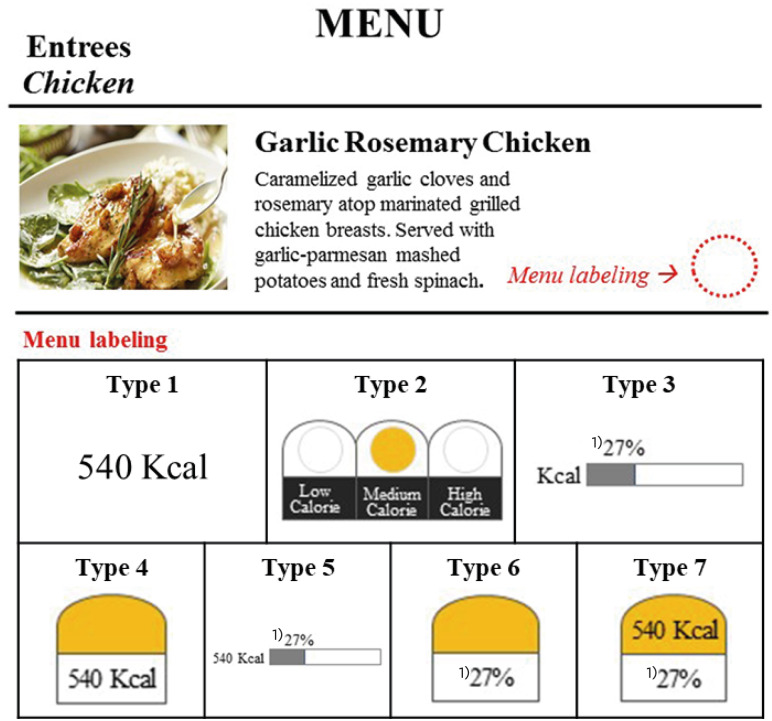 | Fig. 1Types of menu-labeling formats.Type 1, kcal menu labeling; Type 2, traffic-light menu labeling; Type 3, %DI menu labeling; Type 4, kcal + traffic-light menu labeling; Type 5, kcal + %DI menu labeling; Type 6, traffic-light + %DI menu labeling; Type 7, kcal + traffic-light + %DI menu labeling. (%DI, percent daily intake).
1)Number (%): percent of Recommended Dietary Allowance.
|
Research instrument
Table 1
Description of measures
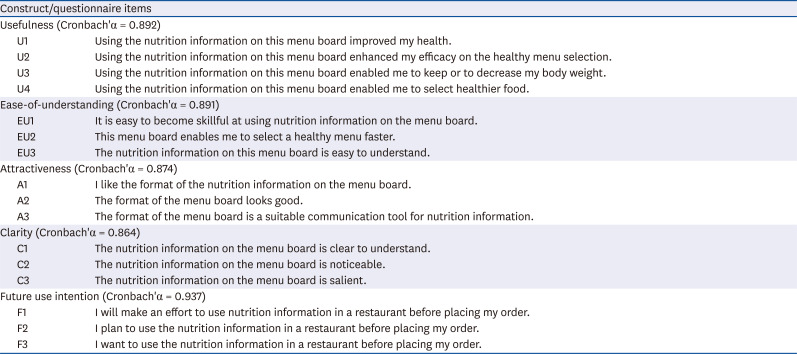
Statistical analysis
RESULTS
General characteristics of the respondents in Korea and the U.S.
Table 2
General characteristics of the respondents in Korea and the U.S.
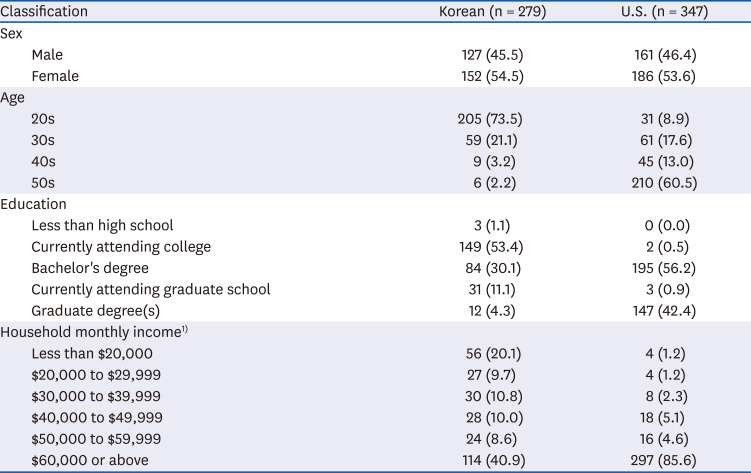
Perception of the attributes of different formats of menu labeling in Korea and the U.S.
Table 3
Korean customers' perception of the attributes of different formats of menu labeling (n = 279)
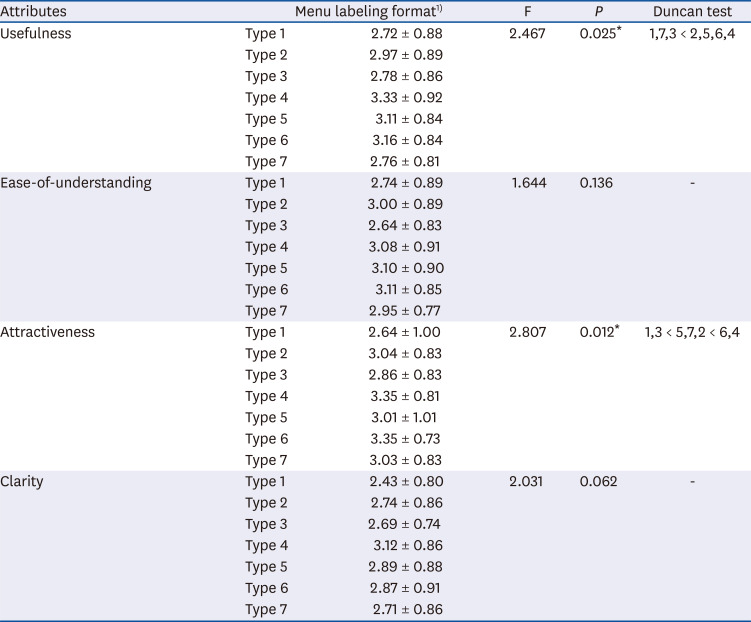
Table 4
American customers' perception of the attributes of different formats of menu labeling (n = 347)
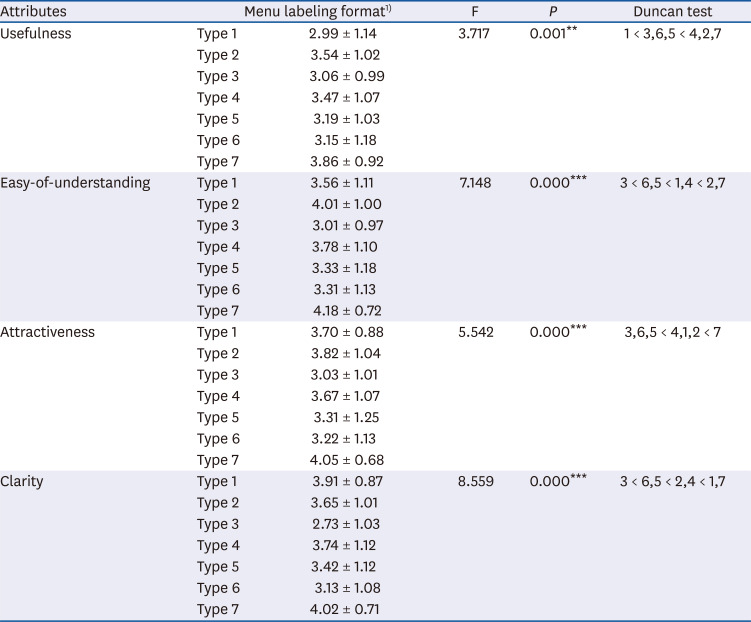
Comparison of the customers' perceived attributes of menu labeling between Korea and the U.S.
Table 5
Comparison of the customers' perception of the attributes of menu labeling between Korea and the U.S.

Customers' future use intention toward different formats of menu labeling in Korea and the U.S.
Table 6
Korean customers' future use intention toward different formats of menu labeling (n = 279)

Table 7
U.S. customers' future use intention toward the different formats of menu labeling (n = 347)

Comparison of the customers' future use intention toward menu labeling between Korea and the U.S.
Table 8
Comparison of the customers' future use intention toward menu labeling between Korea and the U.S.

| Variable1) | Korean (n = 279) | U.S. (n = 347) | t | P |
|---|---|---|---|---|
| Future use intention | 2.91 ± 0.92 | 3.58 ± 1.18 | −7.515 | 0.000*** |
DISCUSSION
1. Korean customers had different perceptions toward different formats of menu labeling for usefulness and attractiveness. Koreans rated the type 4 (kcal + traffic light) format as highest for usefulness and attractiveness, while the type 1 (kcal) format was rated lowest for usefulness and attractiveness by Koreans.
2. American customers perceived the different formats of menu labeling for usefulness, ease-of-understanding, attractiveness, and clarity differently. Americans perceived type 7 (kcal + traffic light + %DI) to be the highest for usefulness, ease-of-understanding, attractiveness, and clarity. On the other hand, the type 3 (%DI) format was rated the lowest for usefulness, ease-of-understanding, attractiveness, and clarity by Americans.
3. Significant differences in the customers' perceived attributes to menu labeling were found between Korea, and the U.S. Americans perceived higher usefulness, ease-of-understanding, attractiveness, and clarity toward menu labeling than Koreans.
4. Koreans did not show a significant difference in the future use intention toward the different formats of menu labeling.
5. The Americans showed a significant difference in the future use intention toward different formats of menu labeling. They revealed the type 3 (%DI) format to be the lowest in the future use intention toward menu labeling.
6. Americans showed a significantly higher future use intention toward menu labeling than Koreans.




 PDF
PDF Citation
Citation Print
Print



 XML Download
XML Download